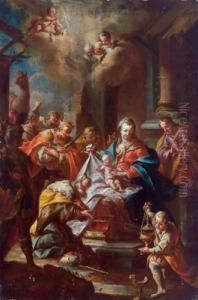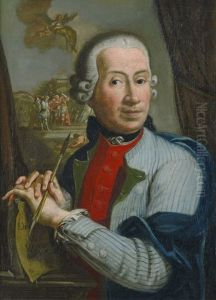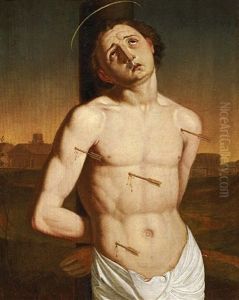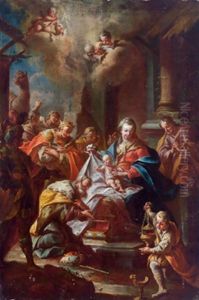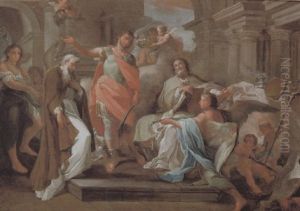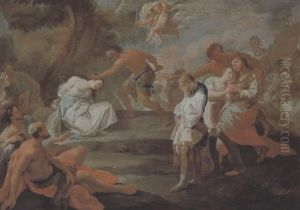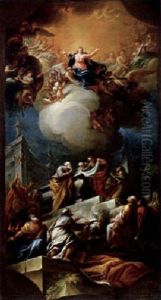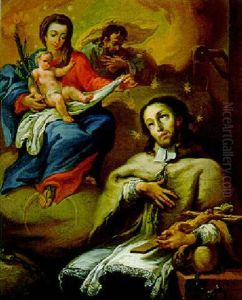Franz Anton Zeiller Paintings
Franz Anton Zeiller was born in 1716 in Reutte, Tyrol, in what is now Austria. His early life and education set the foundation for his later achievements as a prominent Rococo painter, particularly noted for his religious and fresco works that decorated many churches and buildings in Southern Germany and Austria. The Rococo style, known for its elaborate ornamentation, light colors, and fluidity, was at its peak during Zeiller's lifetime, and he emerged as one of its proficient exponents.
Zeiller's career was marked by significant periods of travel and study, which greatly influenced his artistic development. He likely received his initial training from his father, who was also an artist, before moving on to study under more established painters of his time. His work was characterized by the use of vibrant colors, attention to detail, and dynamic compositions, which were well received by both the ecclesiastical and secular patrons of the period.
Throughout his career, Zeiller contributed to the decoration of numerous churches, including the famous frescoes in the Ettal Abbey in Bavaria and the ceiling paintings in the Wilten Basilica in Innsbruck. These works are celebrated for their artistic merit and the way they harmonize with the architectural elements of the buildings, exemplifying the Rococo style's integration of art and architecture.
Franz Anton Zeiller's legacy is preserved through his contribution to the Rococo movement and the enduring beauty of his works. He passed away in 1794, leaving behind a body of work that continues to be studied and admired for its elegance and artistic significance. His influence is seen not only in the continuation of the Rococo style but also in the transition to Neoclassicism that followed, as artists and critics began to seek a new direction in the late 18th century.
